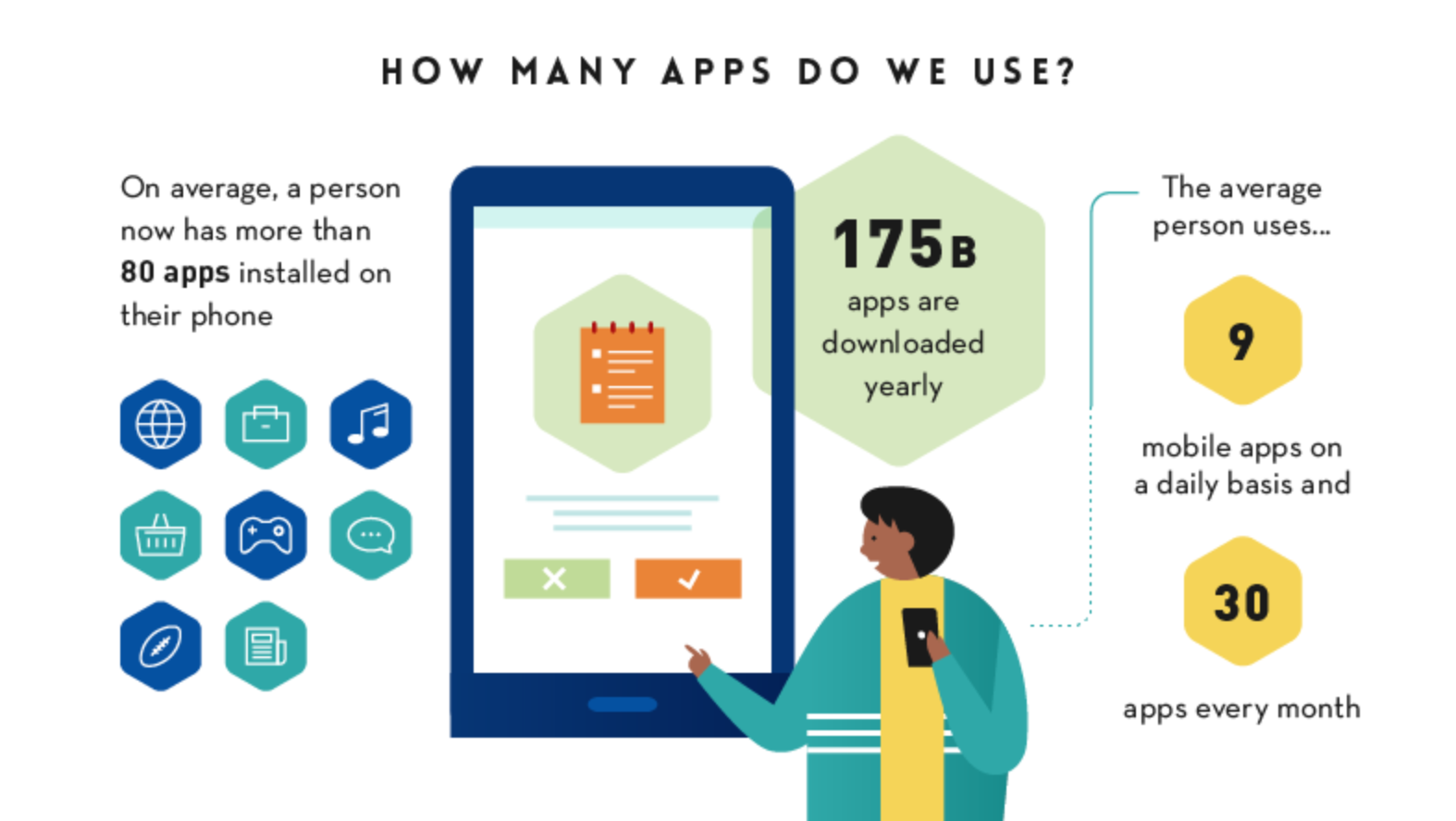9 Things To Make Mobile App Successful

Mobile apps are everywhere today, there is an app for everything you can think of. And there are more getting created every single day!! In this situation how do we make sure our app is successful? Join me in this article as we explore the 9 things to make your next app successful….
The number of smartphones to be used around the world by end of 2020 is predicted to be 3.5 Billion. Users spend 90 percent of that time on apps.
There are over 2.7 million apps in the Google Play store and 2.2 million in the App Store. The majority of users use 9 apps per day and 30 apps per month.

As you can see with so many apps in the market which are all competing to gain user's attention, competition is very harsh. That's why we need to think about our idea and understand its use for our users. So, here goes our list of things that are useful in making a mobile application successful.
1. Try to solve a basic problem
Always think of your app as a problem solver to one simple thing and it does that brilliantly.
Take the example of Uber, it literally does one thing for a customer, which is “request a ride”. Lots of time we want to pack our app with many features, thinking that it will help our users. But it actually does the opposite, we leave the user in a state of confusion. We always need to remember to do one simple thing and do it exceptionally. After that, we can add more features as we learn more about our users, their expectation, and their behavior.
2. Plan and Target Audience
Once we researched and figured out how and where we stand out we need to come up with a plan. We need to answer a few questions:
- Who is our target audience?
- How will you reach the target audience?
- Should we offer our app for free? and then charge for premium features
- Charge a fixed price? and offer everything.
These decisions will help us understand your path forward with the app.
3. Simple/Intuitive Navigation
A simple/effective navigation in mobile applications is as crucial as the core feature of the app.
Your app’s workflow should be so intuitive that if you ask a first-time user to perform an action, they should exactly know where they would go and should be able to achieve it within a couple of clicks.
It is important that the core functionality of the app is reachable with the least number of taps.

4 Color Scheme
“First impression is everything” → This holds true to our mobile apps as well
When the user opens your app for the very first time, the color combination in your app creates a certain emotional response. Our choice of color combination can really impact our user’s engagement. Therefore, we need to decide exactly what we want our users to feel when they look at our app and drive our color decisions based on that.

5. Device Orientation Support
We use so many apps on our smart devices. Some of them support both portrait and landscape and some only one. Have you ever thought about why certain apps support landscape and portrait mode while some don’t?
The orientation that your app supports can totally change how a user interacts with it. Executed nicely, this can enahance your user experience on the other hand executed poorly it can ruin the experience.
Always think through the features you plan on supporting and which orientation will make sense for those features. If a certain orientation enhances user experience with your app only then support multiple orientations.
6. Select Correct Technology
When it comes to mobile apps, there are various technology options. We need to pick the right technology for our use case. There are basically three options
Native
Native apps are made for specific platforms, iOS, or Android. These platforms have their programming language which is used to develop the application. Since development is done natively, we can leverage device hardware and functionality to a larger extent. So the performance is best in this case.
Cross-Platform Native App
Apps with this approach use SDK (Software Development Kit), but they kind of run natively. Performance is not good as compared to native but if you are running on a limited budget this could be a great option. Examples of this technology are Flutter and React native.
Hybrid
When you really want to cover all devices and all platforms and need cost-effectiveness, quick deployment, and portability, a hybrid app is the best option. This is the option with the least performance. The best part of this approach is, you just write code once and use it on all platforms. In this approach, all web technologies are used. Html is used for layout, CSS for styling, and javascript for interactions.
7. Minimum support version of OS
As an app developer, you always want as many users as possible for your app. When you decide the minimum support version of the OS, always keep in mind every user doesn't upgrade to the latest OS. They could have old phones with old software. So, do your research before settling on the minimum OS version support.
8. Make sure your app is secure
In today’s era, we do and can do everything from mobile apps. From as simple as a recipe app to making banking transactions all from your smartphones. As such, we need to make sure our user data is always secure. We need to follow standard practices to secure our app. Our users trust us with their data and we need to always keep it secure.
9. Add crash and event tracking
We need to learn how our users are interacting with our app. This includes the crashes and errors that they are seeing. In order to understand our user’s interaction and experience, we use crash tracking and event tracking. You can use tools like Google Analytics, Firebase Crashlytics, etc to understand the crashes, errors, and user interaction to act upon them.
Conclusion
To build an application that works and is successful, we need technology, design, business acumen, and an execution plan that works. It is the sync between these pieces that lays the foundation of a successful mobile app.
References
- https://techjury.net/blog/app-usage-statistics/
- https://buildfire.com/app-statistics/
- https://www.lifewire.com/how-many-apps-in-app-store-2000252
- https://www.statista.com/statistics/266210/number-of-available-applications-in-the-google-play-store/
- https://www.digitalinformationworld.com/2019/03/amazing-mobile-apps-usage-facts-infographic.html


